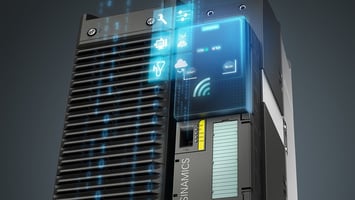The 2019 Engineers' Choice Grand Award-winning Siemens SINAMICS G120 Smart Access Module is a...
Intelligent and Smart Spaces: Influencing the Modern Factory
.png?width=300&name=ACD%20Image%20(4).png)
As the technology and machinery involved in manufacturing processes become smarter and more advanced, so too does the factory environment. Intelligent spaces, or smart spaces, are “physical locations equipped with networked sensors to give owners, occupants, and managers more and better information about the condition of those locations and how they’re used." Below we’ll discuss the benefits of a smart space in the factory environment as well as some pertinent examples of technology being utilized to make a factory smart.
What Makes a Factory Smart?
Perhaps put most simply, a smart factory is “a factory where the physical production processes and operations are combined with digital technology, smart computing, and big data to create a more opportunistic system for companies that focus on manufacturing and supply chain management." These provisions also extend to safety precautions - such as sensors - as well as energy-conscious functions as well. The integration of IIoT, embedded sensors, improved connectivity, automation, and machine learning all contribute to making a smart factory. These tools give factory workers real-time data and an in-depth range of information quickly. They can then use this information to make crucial decisions - whether to avert a potential system failure or to improve an inefficient process - saving your business time and money.
Advantages
Smart spaces have a multitude of advantages within factories. Here are just a few examples of the benefits smart spaces offer:
- Cost Savings and Environmental Benefits: Real-time adjustments of heating, cooling, and lighting based on weather changes and building occupancy reduces energy consumption and positively impacts your business’ carbon footprint. This actively saves your business money.
- Increased Safety: Upgraded and smart security systems as well as alert sensors (notifying an individual should they enter a hazardous environment where manufacturing processes may be underway), make factories safer for their employees.
- Risk Mitigation: The ability to monitor and control various capabilities remotely allows for a wider breadth of knowledge. With new information, supervisors can catch potential errors before they become catastrophic and prevent them before they start. In fact, smart technology can push alerts indicating the need for routine maintenance, further mitigating potential work-stoppage risks.
Smart factory connectivity
Image Source: https://www.industryweek.com/technology-and-iiot/article/21959512/the-dawn-of-the-smart-factory
Interested in learning more? Connect with an ACD expert!
You may also be interested in reading:




